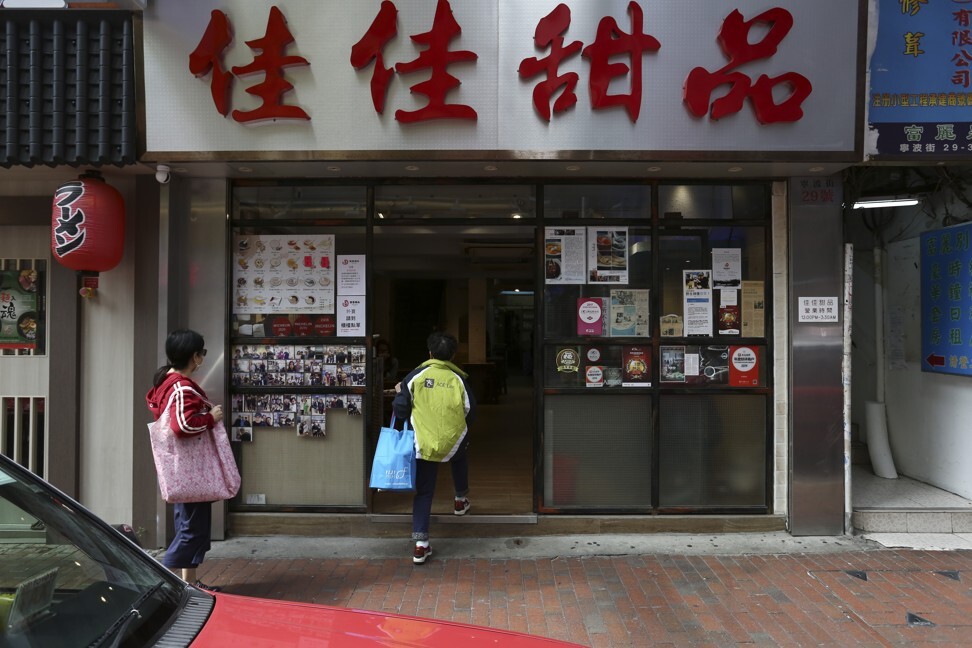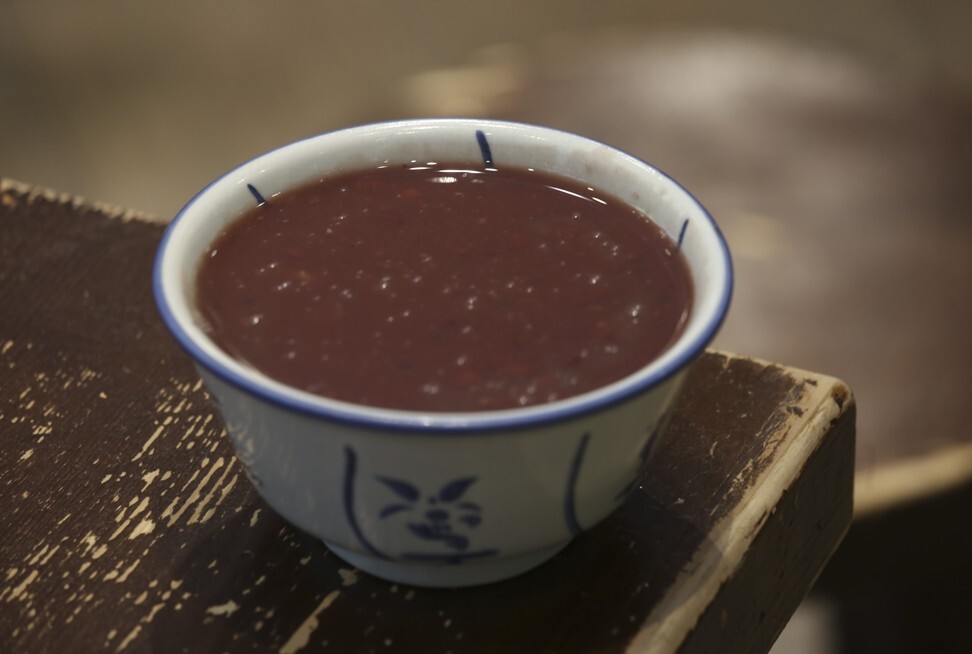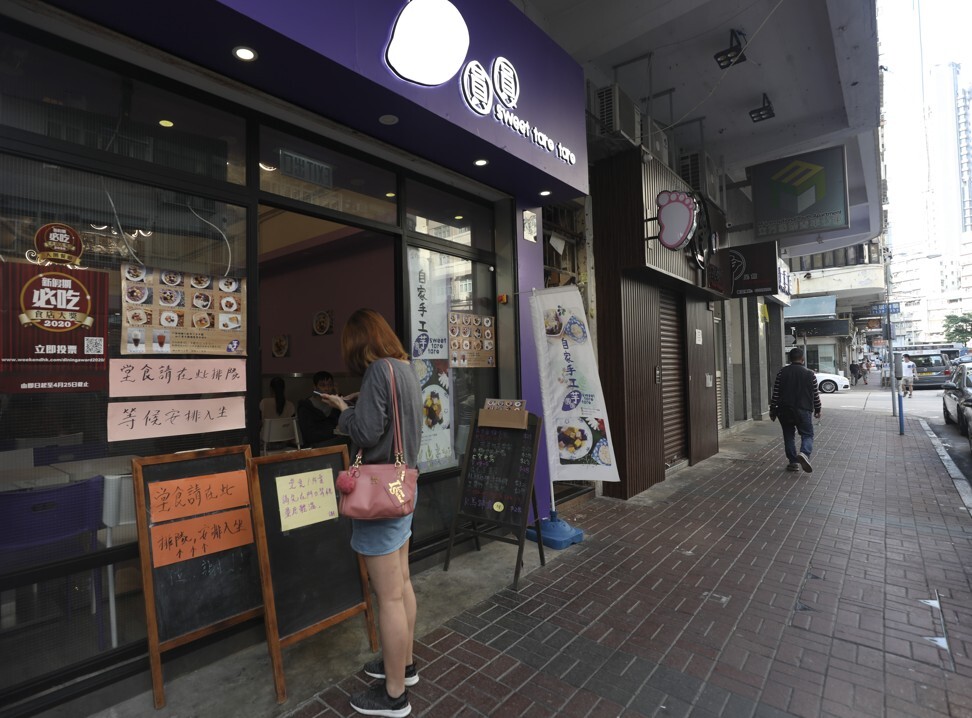
In Hong Kong, no big meal feels complete without a bowl of red bean sweet soup.
Served hot in the winter and lukewarm when the weather turns mild, tong sui – “sweet water” – dessert soups made with ingredients such as red bean, black sesame and peanut paste are popular with people all year round.
While some shops put a modern twist on tong sui, Kai Kai Dessert in Jordan, Kowloon, prefers to keep things old school.
“We cling to traditional flavours, trying to replicate versions imprinted in the memories of many local elderly people,” says Chiu Wing-keng, whose father founded the shop more than 40 years ago.

Their most popular desserts are classics, including ginkgo and barley with dried bean curd sheets; peanut, glutinous rice and pearl barley sweet congee; red bean sweet soup with lotus seeds; and sugar-stewed papaya soup.
“The first two in that quartet have been on our menu since we opened in 1979,” Chiu says.

Chiu doesn’t change his recipes. It’s not that he is old-fashioned or lacks imagination – he simply wants more people, especially younger people, to appreciate the taste of traditional tong sui, and he thinks it’s sad to see these once-popular desserts slowly disappear from the city.
Tong sui seem simple enough to make (often, the ingredients are just boiled), but a good chef knows there is more to the process if you want the best results.
Peanut, glutinous rice and pearl barley sweet congee, for example, takes three hours to cook. “The rice grains must bloom, but can’t be overcooked to the point of turning into a mush,” Chiu says. “It shouldn’t be as velvety as a typical, savoury congee – it should taste grainy and textured.”

The process of perfecting tong sui starts with the ingredients, Chiu says. For each ingredient, he tries different varieties before settling on the one he’s happy with.
For his red bean sweet soup with lotus seeds, Chiu experimented with different varieties of red bean and finally picked ones from Tianjin, a port city in northeastern China. “The red beans can’t be too mealy or they will be easily scalded or turn into mush. The Tianjin variety is not starchy, but is sweet.”
Dried tangerine peel offsets the astringent, bitter flavours of the red bean. “The tangerine peel we use is dried and aged for 10 years. You can easily tell the difference between five-year-old peel and a 10-year-old peel,” Chiu says. The peel, called (“old skin”), gets more expensive with age.

For sugar-stewed papaya soup, the fruit must have the right amount of fibre. “We import papaya from Hawaii. Before that, we tried papayas from mainland China, Thailand and other parts of the US,” Chiu says. “They either were not sweet enough, or had too much fibre, which dissolves into a cloying slush as it boils.”
For black sesame soup, Chiu uses sesame seeds from Zhanjiang, in China’s Guangdong province, as “the Zhanjiang variety is double-hulled, and so more plump and fragrant”.
Chiu’s father devoted his life to Kai Kai. He still drops in from time to time. At first, Chiu hadn’t thought about taking over the business. “I would watch my father labouring in the kitchen, whizzing around to serve customers. I grew up here, and felt numb about everything happening here,” he says.
“But one day, I glanced at my father’s back across the kitchen and I was taken aback – he looked old. I hardly recognised him. I woke up to the fact that he was no longer the tireless father that I had known. I decided to help him run the store.”
It took him nearly five years to pick up the skills needed to run the shop successfully. “It was very, very tough, intensive training.”

Luk Lam Dessert, another tong sui shop in Hong Kong, has been around for 35 years. At its helm is Chung Wah-sung, who is nearly 70. He emigrated from mainland China to Hong Kong when he was about 20, and it was in Hong Kong that he discovered tong sui. Slurping down a bowl of it became a daily habit.
Luk Lam’s soups won’t appeal to everyone. “You either love it or hate it,” says Chung of desserts such as the Taxillus chinensis black bean sweet tea with egg and lotus seed. Its dark colour may look off-putting, but the sweet tonic is beloved by many for its neutral (neither “warming” or “cooling”) property.
“It’s good for men and women, young and old,” says Chung’s niece, Kitty Mak, who works at the shop. “It’s touted for its benefits of alleviating joint pain and stiffness caused by arthritis, improving sleep quality, nourishing the body, and balancing yin and yang.”

The green bean with dried tangerine peel and kelp sweet soup is another acquired taste – and one which uses a pungent herb that is not listed in the dish’s name.
“Rue herb is called ‘stinky grass’, but it isn’t stinky at all. We don’t know why it is given such a name, it’s unfair,” Chung says, smiling. As he unwraps bundles of the herb, a strong aroma wafts out – something between coriander and clove. Once brewed, the “stinky grass” introduces a herbal note to the soup.
Like Chiu, Chung emphasises the importance of using natural, premium ingredients in his dessert soups for the best results.
“We guarantee that every ingredient is sourced from a place that is an expert at producing it, and nothing artificial is used. The taste of the soups come from the fruits, root vegetables, herbs, crops or nuts. The boiling distils and amplifies the taste,” Chung says.
For his sweet potato with ginger soup, Chung picks a variety of sweet potato with a yellowish colour. “The red variety is too sweet and starchy, while the purple one tastes too mild.”
The ginger makes the soup piquantly spicy, which marries perfectly with the chunks of sweet potatoes. “It must be served piping hot, or the spiciness lessens,” Chung says. “Many locals come here for the treat, and demand ‘more spiciness, please’.”

Chung also serves an original recipe treat of home-ground chestnut sweet soup. Every spoonful contains a mix of chestnut slurry and chestnut morsels.
Although he likes tradition, Chung says he is open to food trends. “We don’t want to change, but the market doesn’t allow us to stay put. We also need to cater to evolving appetites.”
His shop serves, for example, a collection of desserts using peach resin (natural hardened sap from the peach tree), including steamed milk and egg white with peach resin, and stewed peach resin with snow fungus, longan pulp, red dates and lotus seeds. The sap is packed full of collagen and lauded for its supposed ability to preserve a person’s youthfulness and beauty.

Taro and sweet potato, used in traditional desserts, have become popular with younger foodies thanks to their increased use in bubble tea.
Taro, sweet potato and purple potato pearls are used in every classic sweet soup offered at Sweet Taro Taro in Prince Edward, Kowloon. In the black glutinous rice soup with coconut milk, the chewy bubbles are drenched in coconut milk and condensed milk. In the water chestnut sweet soup with scrambled egg, the gummy pearls provide a contrast to the crunchy water chestnuts.
Another nourishing sweetened tonic the shop offers is snow pear and osmanthus fragrant sweet soup. The two main ingredients are naturally sweet and aromatic, and supplemented by a mix of rock sugar and brown slab sugar. Sea coconut, clouds of snow fungus and water chestnuts lend an extra depth of flavour and are also supposed to have a positive effect on health.
“It’s a shame that young people are indifferent to traditional tong sui,” says co-owner Alun Wong, adding that 70 to 80 per cent of his clientele are young people. “Old-fashioned sweet soup stalls are not among their haunts, but we hope our contemporary twist to the traditional treats can help evoke their interest.”

Kai Kai Dessert, 29 Ning Po Street, Jordan, tel: 2384 3862
Luk Lam Dessert, 77-79 Un Chau Street, Sham Shui Po, tel: 2361 4205
Sweet Taro Taro, 1 Cedar Street, Prince Edward, tel: 5543 0154
Like cooking? For Asian recipes to make at home for friends and family, visit .







